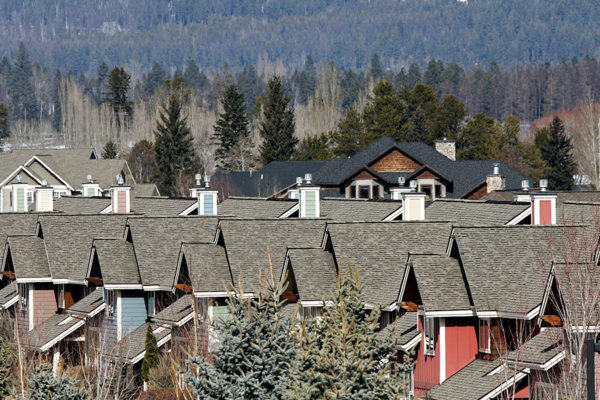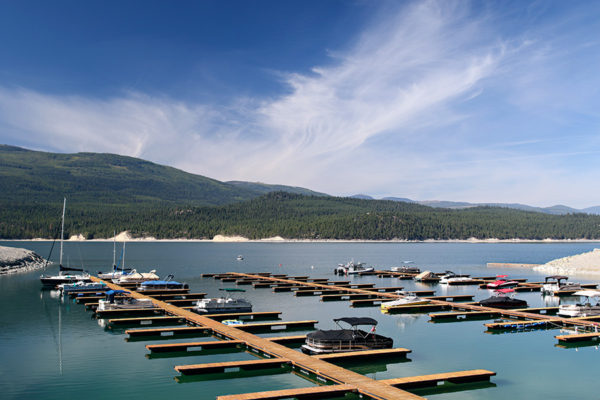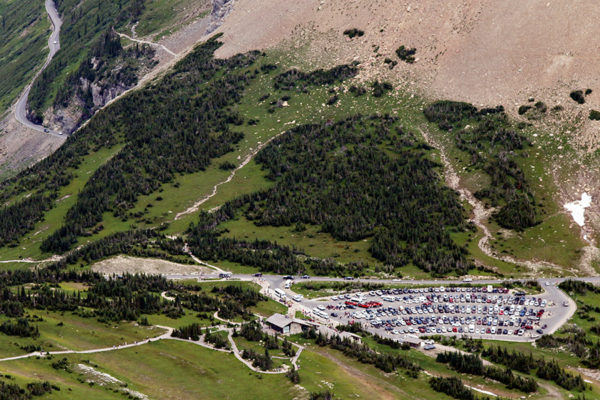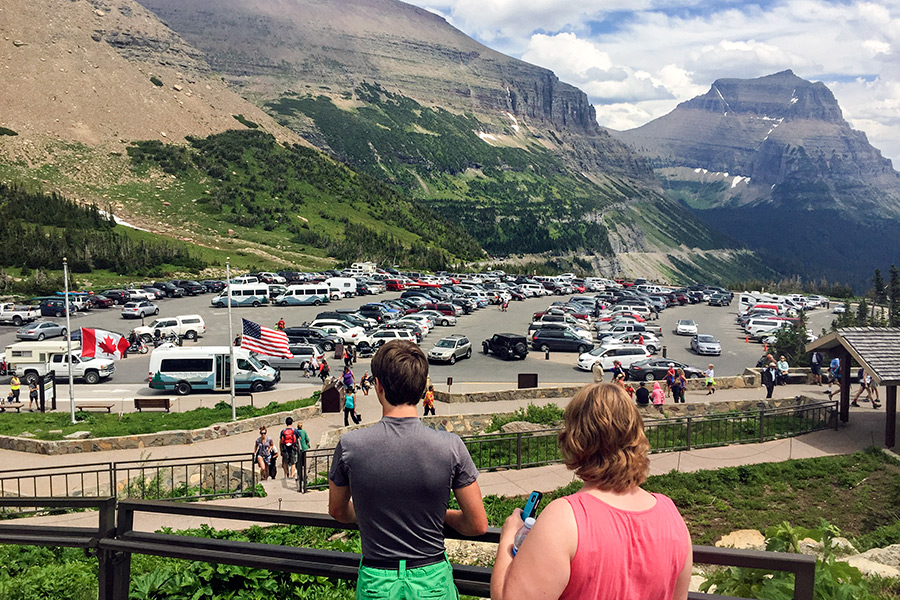The 2017 Legislature
The 65th Legislature kicked off Jan. 2, marking the launch of the state’s 90-day political session in Helena, where debates erupt over everything from infrastructure funding to preschool programs and maybe even yoga pants. This session features a familiar scenario with a strong majority of Republicans in the state House and Senate but a Democratic governor who has the final say. Both sides of the aisle will inevitably need to work together to tackle a critical issue — state tax collections are tens of millions of dollars below expectations for individual income taxes, corporate income taxes and energy taxes, raising significant budget questions. Some initial proposals on the table, including Gov. Steve Bullock’s request to reduce funding for the Montana Highway Patrol, are already causing uproar. How will Republicans and Democrats agree on funding the many facets of state government?
Kalispell’s Core Area Plan Moves Forward
Years of planning and organizing have gone into the Kalispell Core and Rail Redevelopment Project, and a $10 million federal transportation grant in 2015 provided the financial boost to bring the ambitious revitalization plan to life. Now it’s time to see changes materialize. Construction is expected to begin this spring on the Glacier Rail Park off Whitefish Stage Road, according to the Flathead County Economic Development Authority, which is spearheading the project. Once infrastructure is in place at the 43-acre site, CHS is expected to relocate its multiple downtown buildings to the new rail park by 2018. The city plans to remove the downtown railroad tracks in 2019 and develop an extensive path system in their place. City and business leaders hope these changes and others will spur private redevelopment and expansion in Kalispell’s core area.
What’s Next for Kalispell’s Main Street?
Now that the U.S. 93 Alternate Route is complete, what does that mean for Kalispell’s Main Street? The original reason for the bypass was to reduce traffic congestion in downtown. City, county and state planners are studying ways to address the situation, and possible solutions range from reducing Main Street to two or three lanes with different types of parking to widen Main Street around the county courthouse. There doesn’t appear to be an easy answer, especially since the valley’s growth continues to drive more vehicles into town regardless of the bypass’s completion. A final proposal is expected to emerge this year.

Solving the Affordable Housing Crisis
An in-depth report released in late 2016 laid bare Whitefish’s affordable housing crisis, reaffirming what many locals already knew: outsized home prices and scarce rental opportunities are forcing many families and workers to live elsewhere at a growing rate. The report estimated that 980 housing units — roughly 400 for ownership and 580 for rent — are needed in town to address the current workforce housing shortage and keep up with future demand through 2020. City leaders have pledged to address this issue, but finding a solution will prove challenging as home prices and rental costs in the resort community continue to rise while average local wages struggle to keep pace.
Canadian Comeback?
You don’t know what you’ve got until it’s gone. After years of Canadian visitors flocking to Northwest Montana and providing a much-needed economic boost, our neighbors to the north ran into economic troubles as the Canadian economy receded, especially directly north in Alberta. In 2016, businesses across the Flathead Valley reported noticeable drops in Canadian shoppers. The forecast for 2017 appears somewhat gloomy. Economists are expecting the loonie’s value to remain low in relation to the U.S. dollar, retaining a barrier for Canadian shoppers. Alberta’s economy is expected to rebound slightly as oil prices inch upward, but job growth is forecasted to recover slowly. Also, the Trump administration could play a big role in Canada’s economic future, as the new U.S. president has repeatedly pledged to tear up the North American Free Trade Agreement, which could significantly disrupt Montana’s largest trade partner.
The Future of the Creston Water Bottle Plant
Local opposition continues to rally against a proposed water bottling plant in Creston near the Flathead River. Last week, community members sued the Flathead County Commission over the recent denial of a petition to expand a zoning district that would hamper the bottling plant’s creation. The lawsuit asks the district court to declare the commissioners’ decision unlawful. At the same time, the Montana Department of Environmental Quality is reviewing a wastewater discharge permit request from the Montana Artesian Water Co. along with formal objections from nearby residents and water rights holders. The permit would allow the plant to discharge 65 gallons of treated wastewater per minute into a nearby tributary of the Flathead River.
Corralling the Crowds in Glacier Park
Anyone who visited our national park last year would agree: it was crowded. Nearly 3 million people visited Glacier Park in 2016, a new annual record, and roughly 600,000 people more than the prior year. It was the third consecutive year of record-breaking crowds at the region’s largest attraction, a welcome boon for local businesses. Yet, in its effort to protect resources and the unique experience that Glacier offers, the National Park Service is studying this trend and preparing to unveil its proposed management plan for the Going-to-the-Sun Road corridor with a variety of methods to address traffic and visitor congestion. This could include some controversial procedures used at other parks across the U.S., including capacity limits and a trip reservation system.
Continued Population and Economic Growth
This valley is rapidly growing both economically and demographically, harkening back to a decade ago when the Flathead Valley was flourishing until the recession hit. With the second fastest growth rate in the state, Flathead County is approaching 100,000 residents. Schools are expanding and the first new elementary site since 1987 is breaking ground this spring.
This valley is also one of the top economic performers in Montana despite worker shortages hampering growth in certain sectors. The health care industry has grown substantially into the top local sector with sizeable expansion to persist in 2017. Tourism continues to thrive while industrial jobs become increasingly scarce, creating a new economic landscape for a valley that was largely built on blue-collar work. Wages in Flathead County are some of the lowest in the state on average, and housing costs have increased at a faster pace, making it difficult for families and low-income residents.

Defending Against Invasive Mussels
Montanans are becoming increasingly familiar with mussels and the threat they pose to the state’s cherished waterways. Last year saw the first detection of the invasive species in the state, and a task force has formed to combat the spread of the devastating mussels. The detection has increased the potential for mussels to spread by clinging to the hulls of boats or persisting in bilge water. If mussels do spread to other waterways, such as Flathead Lake, it could lead to millions of dollars in damages and significantly harm fisheries. State agencies are considering expanded efforts to combat the spread. Boaters should expect to see increased inspection efforts, along with enhanced monitoring efforts, public outreach and public education.
Special Election for U.S. Representative
Just when it seemed the tiresome election season had ended, President-elect Donald Trump selected Montana’s U.S. Rep. Ryan Zinke to serve as secretary of the interior in the new administration. Zinke’s nomination means Montana must hold a special election to fill the vacant Congressional seat. A special election for a permanent replacement must be held within 85 to 100 days of Zinke’s formal resignation. Democrats and Republicans are now scrambling to find viable candidates for Montana’s lone representative seat, and a few names have already trickled out, including Great Falls state Sen. Ed Buttrey, a Republican, and Great Falls state Rep. Casey Schreiner, a Democrat. U.S. Representatives serve two-year terms. Zinke was just re-elected in November.
Montana’s Secretary of the Interior
What will it mean to have a Montana native in the president’s cabinet and in charge of the nation’s federal lands and natural resources? Montanans are about to find out as Ryan Zinke takes over as secretary of the interior.
The Department of the Interior is responsible for energy leases on millions of acres of federal lands and waters around the U.S., as well as for management of national parks. The Whitefish native has been a staunch advocate of mining and logging on federal lands, prompting some to voice concern that he would align with Trump’s agenda to prioritize the development of oil, gas and other resources over the protection of clean water, air and wildlife.
Others have raised concerns about his mixed views on climate change. Zinke has said climate change is “not a settled science,” yet he has also said in interviews that “something’s going on” with the climate.
At the same time, as a first-term U.S. Representative, he broke from the Republican pack and voted in favor of extending funding for the Land and Water Conservation Fund.
Rising Interest Rates and the Impacts on Real Estate
The days of historically low interest rates appear to be ending, creating uncertainty in the housing market. Last month, the Federal Reserve raised a key interest rate in response to a strengthening U.S. economy and expectations of higher inflation, and three more rate hikes are expected in 2017. Higher interest rates historically hamper some homebuyers, and the repercussions could already be materializing. According to the National Association of Realtors, pending home sales across the U.S. fell in November to their lowest level in almost a year as the increase in mortgage rates and a lack of available inventory impacted prospective buyers. According to NAR’s chief economist, Lawrence Yun, the outlook for the housing market in 2017 is unclear, but the impact of higher rates could be tempered by stronger wage growth.
In Flathead County, the total number of residential sales was nearly the same as it was in 2015 after 11 months, according to local appraiser Jim Kelley. The median sales price for the first 11 months of this year was $257,000, compared to $238,400 in 2015. The current inventory level remains lower than a year ago. At the end of November, there were 963 residential listings, compared to around 1,300 a year earlier.
What’s Next for America’s Health Care System?
President-elect Donald Trump and Republicans in the U.S. Senate and House have pledged to repeal the Affordable Care Act, or Obamacare, within 100 days of the new administration taking office.
GOP leaders are also seeking to achieve a long-standing goal of overhauling Medicaid, the program that provides health care to tens of millions of lower-income and disabled Americans. Changing the $500 billion-plus program would cause enormous impacts on recipients and states that share in the cost.
Eliminating Obamacare without a replacement plan would cause millions of Americans to lose health insurance. Democratic leaders, including Montana Gov. Steve Bullock, are calling on Republicans to develop a plan before repealing Obamacare.
“Opponents of the Affordable Care Act have had six years to design fixes, replacements, and alternatives,” Bullock wrote in a letter to congressional leaders. “Repealing (the ACA) without an immediate and transparent plan for the future would be grossly irresponsible, throwing our entire healthcare system into chaos and leaving millions of Americans uncertain about their healthcare future.”
Pending Planning Conflict Between Whitefish and the County?
The main thrust of the doughnut saga may be effectively over, but Whitefish and Flathead County are still far from seeing eye to eye on planning and design standards. The latest example is emerging at the south entrance to Whitefish, where a developer is seeking a county zoning change that could pave the way for offices, light manufacturing, and other retail opportunities.
Whitefish residents are worried about Flathead County’s plan to invite so-called “commercial sprawl” in the south corridor. The land, which is within the jurisdiction of Flathead County, is currently zoned agricultural. Although parts of the county’s proposed plan would align with Whitefish’s design and infrastructure standards, the overall proposal could conflict with the city’s vision, which has previously opposed significant development in the southern entrance.
Business owners just outside city limits have complained that they’ve been mired in a zoning limbo that has devalued their properties, hampered their growth and left them grappling with an uncertain future.

The Cleanup of CFAC and the Superfund Designation
What’s next for the Columbia Falls Aluminum Company property? For now, it’s the site of demolition work and environmental testing as the Environmental Protection Agency studies the level of contamination at the former industrial plant. Yet at the same time, prospective developers are already sniffing around to study the economic viability of the massive site, which is served by rail and significant energy infrastructure from the nearby Hungry Horse Dam.
Already one newsworthy plan became public in December after company officials from a leading transformer manufacturer in Brazil visited the site. The owner of Comtrafo S.A. and the company’s chief financial officer have partnered with Andy Techmanski of Whitefish Energy Holdings to explore building a plant in North America, with a Flathead Valley location as their top choice. The plan is to develop a manufacturing plant that would construct and service power transformers, power line utilities and substations for regional utilities. Techmanski estimated the plant would employ 1,000 workers at maximum market potential and 250 employees initially.
Yet question marks remain. How would private development occur while the EPA is cleaning up the property through the Superfund program? Can the transformer company garner enough investment to lay roots here? What’s the timeframe?
Timber Industry Hangs On
Last year was a painful one for the Flathead Valley’s timber industry. Two of the oldest mills in Montana — the former Plum Creek plywood plant and lumber mill in Columbia Falls — shut down, putting 72 employees out of work. Two weeks ago, the administrative office known as the Cedar Palace formally shuttered, leaving nearly 100 people unemployed.
Concerns still surround Weyerhaeuser’s other manufacturing sites in Evergreen and Columbia Falls, as well as throughout the state’s timber industry as a whole. The closure of the mills in Columbia Falls reduced the state’s total to only eight. Montana has seen 30 mills close in the last 25 years. In 1977, Plum Creek employed over 1,000 people in Western Montana, including 632 in Columbia Falls. Following the recent cuts, Weyerhaeuser now employs fewer than 500 people in the Flathead Valley.
Other timber companies are hoping for help in the form of tariffs on imported softwood from Canada. The U.S. and Canada are involved in a trade battle involving lumber imports that Montana producers say are undercutting local companies and flooding the market.
